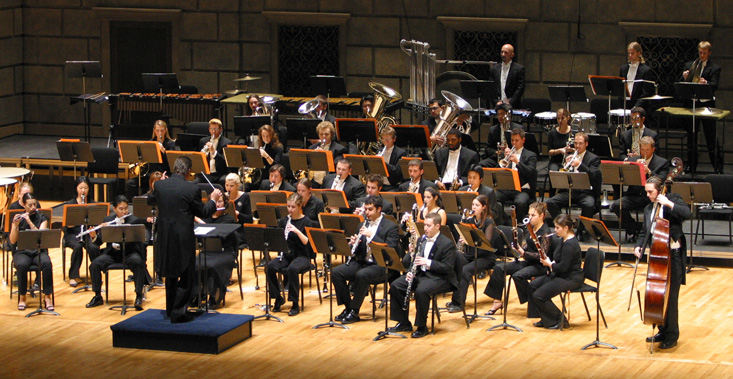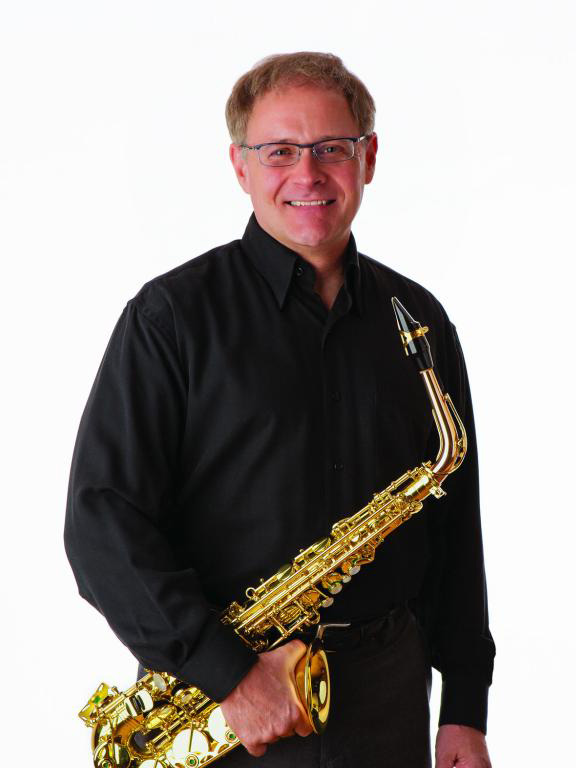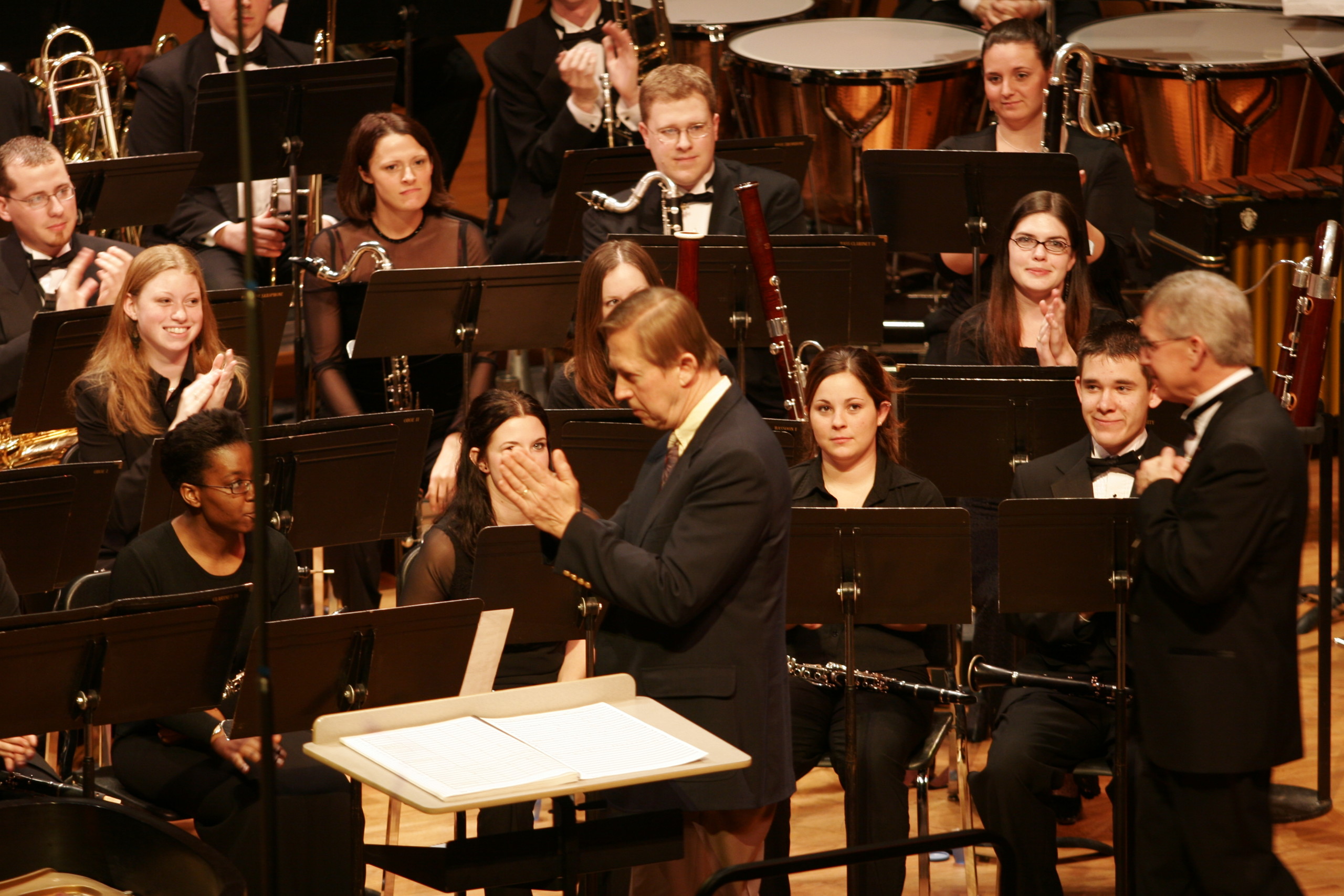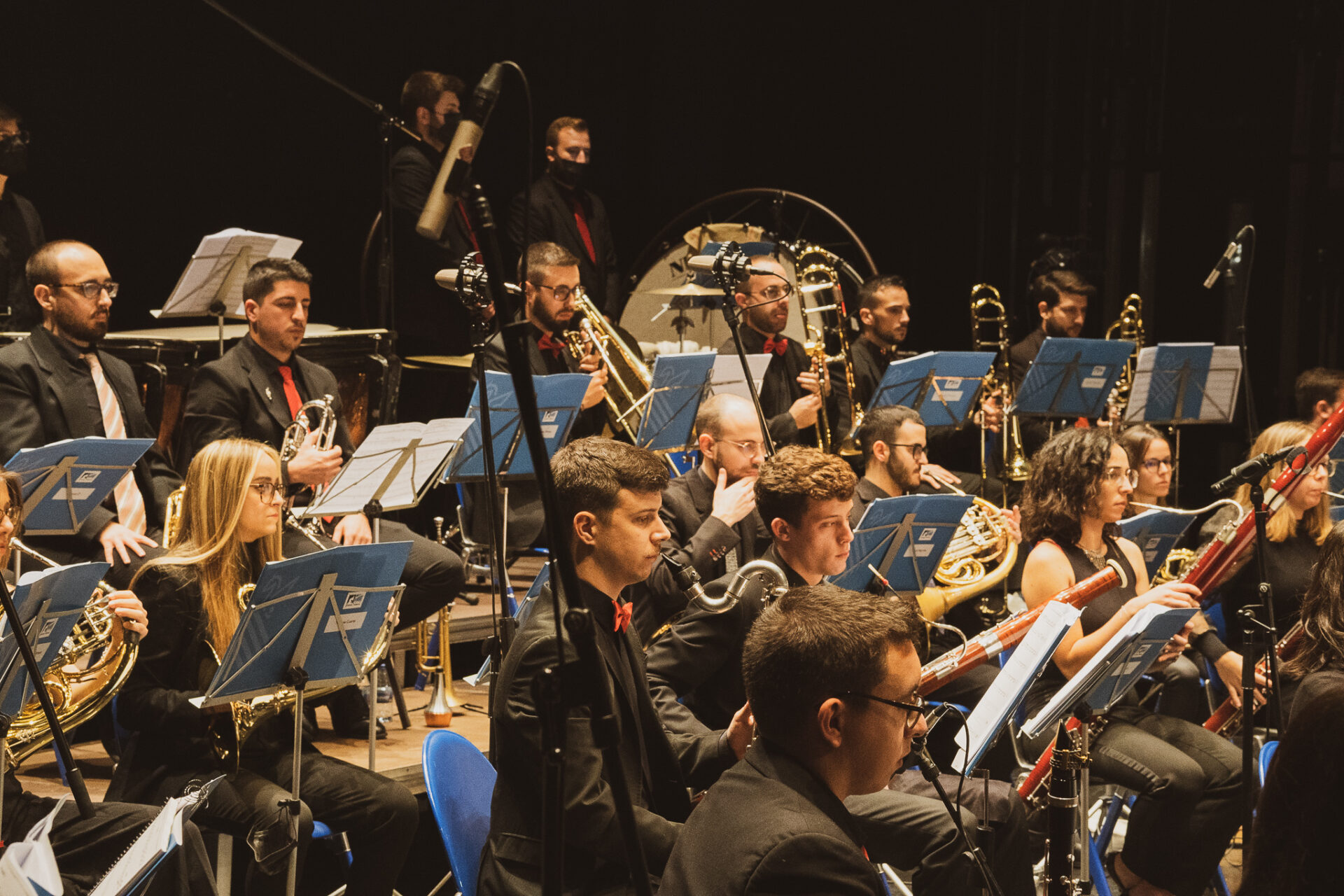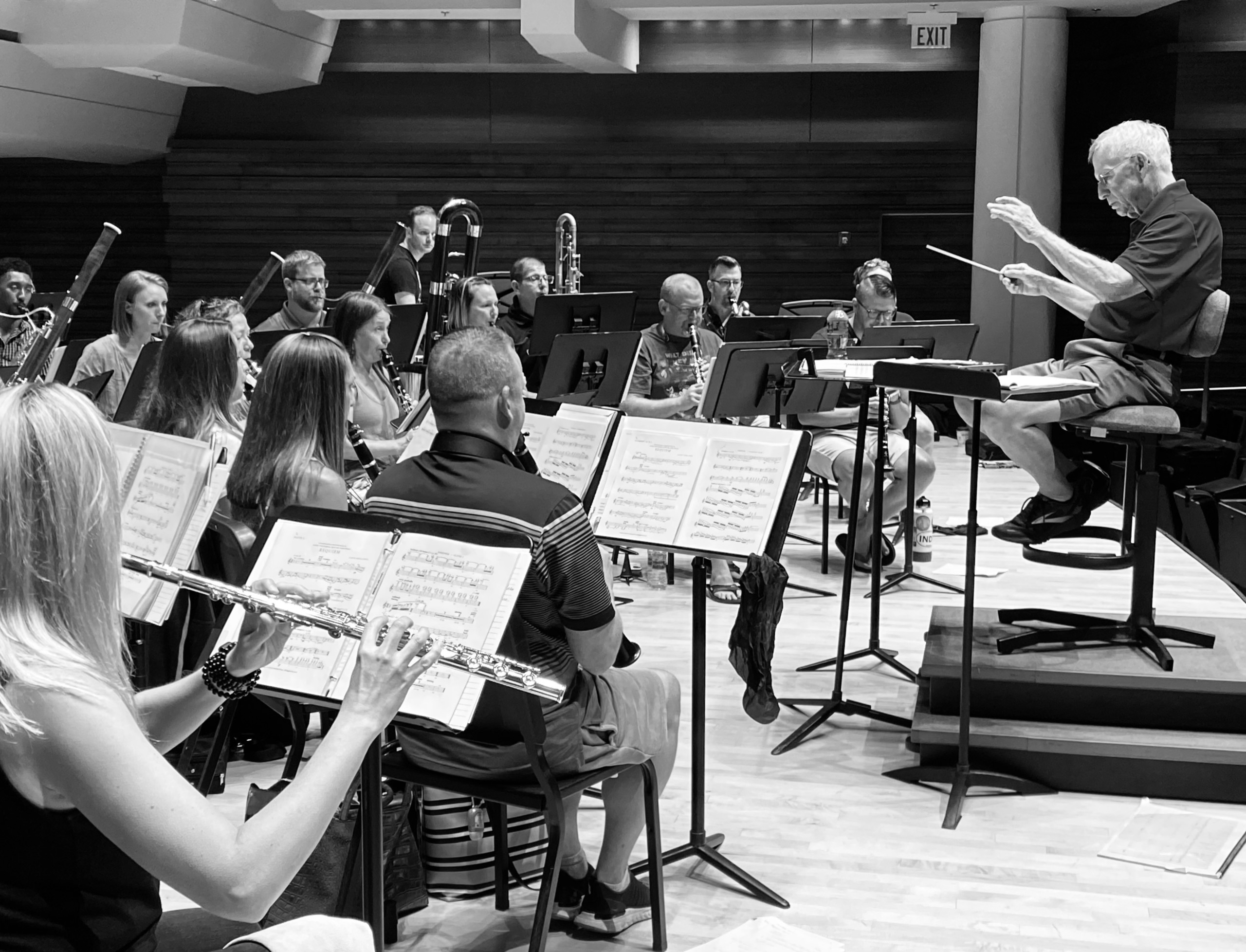Maslanka Weekly highlights excellent performances of David Maslanka’s music from around the web.
From the premiere performance of Concerto No. 1 for Piano, Winds, and Percussion conducted by Frederick Fennell in 1976, The Eastman Wind Ensemble has long championed the music of David Maslanka.
The following is from The Eastman Wind Ensemble’s official website:
“The Eastman Wind Ensemble is America’s leading wind ensemble. Its core of about 50 performers includes undergraduate and graduate students of the Eastman School of Music at the University of Rochester.
Frederick Fennell first formulated the general concept of the wind ensemble at Eastman more than 50 years ago. Under his leadership the group became known as the pioneering force in the symphonic wind band movement in the United States and abroad. A. Clyde Roller served as conductor between 1962 and 1964, continuing the tradition established by Fennell. Donald Hunsberger became conductor in 1965 and led the ensemble for 37 years to international prominence. The ensemble’s current director, Mark Davis Scatterday, was introduced as the fourth conductor of this prestigious group during the EWE’s 50th anniversary celebration on February 8, 2002… In 2005, Scatterday and the ensemble performed at Carnegie Hall as part of CBDNA’s National Conference on February 26th, featuring music by Karel Husa, Roberto Sierra, David Maslanka and Jeff Tyzik.”
This week, we examine three of David’s works that have recently been performed by the Eastman Wind Ensemble: Symphony No. 8, Tears, and Symphony No. 2.
Symphony No. 8
From David’s own program note:
Symphony No. 8 is in three distinct movements, bur the musical layout suggests a single large-scale panoramic vista.
I began the composition process for this symphony with meditation, and was shown scenes of widespread devastation. But this music is not about the surface of our world problems. It is a response to a much deeper vital creative flow which is forcefully at work, and which will carry us through our age of crisis. This music is a celebration of life. It is about new life, continuity from the past to the future, great hope, great faith, joy, ecstatic vision, and fierce determination.
The old is continually present in the new. The first movement touches the “Gloria” from my Mass: “Glory to God in the highest,” whatever that may mean to you: the power of the universe made manifest to us and through us.
Watch below as Mark Davis Scatterday leads the Eastman Wind Ensemble in a thrilling performance of Symphony No. 8, Mvt. I.
More info
- Mark Davis Scatterday
- Eastman Wind Ensemble
- Symphony No. 8 @ davidmaslanka.com
Tears
According to David, “The title ‘Tears’ came from reading the novel Monnew by the African writer Ahmadou Kourouma. His story tells of the destruction of a traditional African culture by European colonization. The native peoples were made to endure the ‘monnew,’ the insults, outrages, trials, contempts, and humiliations of colonialism. My reading of the book was the external motivation for composing the piece, but I don’t know anyone in Africa directly. I have come to understand that fascination with something in the external world means that a thing deep inside me has been touched. So the piece is about something in me. Over the years my music has acted as a predictor for me. It gives me advance non-verbal messages about things inside me that I don’t understand yet: movements of my unconscious that are working their way towards the light.
Tears finally is about inner-transformation, and about groping toward the voice of praise. St. Francis and St. Ignatius have said that the proper function of the human race is to sing praise. Tears is about inner breaking, and coming to terms with the pain that hinders the voice of praise. Tears is about the movement toward the heart of love.”
Watch below as Mark Davis Scatterday again leads the Eastman Wind Ensemble in a sensational performance of Tears.
More info
- Tears @ davidmaslanka.com
Symphony No. 2
From David’s own program note:
Symphony No. 2 was commissioned by the Big Ten Band Directors Association in 1983. I was asked to write a major work for full band. The Symphony was given its premiere at the 1987 CBDNA Convention in Evanston, Illinois. The performing group was the combined Symphonic Band and Symphonic Wind Ensemble of Northwestern University under the direction of John P. Paynter.
The first movement is in sonata form. It travels with gathering force to a climax area halfway through, and then dissolves suddenly into a heated fantasia. A very simple restatement of the opening theme and a brief coda finish the movement. This music is deeply personal for me, dealing with issues of loss, resignation, and acceptance.
The second movement opens with an arrangement of “Deep River,” a traditional African-American melody. The words of the song read in part: “Deep River, my home is over Jordan. Deep River, Lord, I want to cross over to camp ground.” The composition of this movement involved for me two meaningful coincidences. The body of the movement was completed, and then I came across Deep River while working on another project. The song and my composition fit as if made for each other, so I brought the song into the Symphony. The last notes were put onto the score of this movement almost to the hour of the space shuttle Challenger disaster. The power of these coincidences was such that I have dedicated this music to the memory of the astronauts who lost their lives: Francis R. Scobee, Michael J. Smith, Judith A. Resnick, Ellison S. Onizuka, Gregory B. Jarvis, and Christa McAuliffe.
The finale of this Symphony is once again in sonata form. There are three broad theme areas occupying more than a third of the movement, a development based primarily on themes one and three, a recapitulation (minus the third theme area), and a brief coda. The underlying impulse of this movement is an exuberant, insistent outpouring of energy, demanding a high level of playing precision and physical endurance from the performers.
Watch below as Kevin Michael Holzman leads the Eastman Wind Ensemble in a moving performance of the entirety of Symphony No. 2.
More info
- Kevin Michael Holzman
- Symphony No. 2 @ davidmaslanka.com
We would love to hear from you! If you know of any outstanding performances of David Maslanka’s music on the web, please email us at maslankaweekly@maslanka.org.
